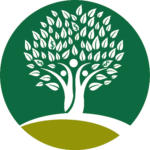Thank you for attending the Small Family Foundation Workshop. We hope you found it of value. Please help us improve our training efforts by completing our evaluation form.
Oops! We could not locate your form.
Thank you for attending the Small Family Foundation Workshop. We hope you found it of value. Please help us improve our training efforts by completing our evaluation form.
Oops! We could not locate your form.
Thank you for registering for the workshop: Introducing Your Organization to Funders.
. Please look for more information from us and a link to the event, as we get closer to May 14.
Contact us if you have any questions.
[email protected]
Cost: $45 | Register Below
For more information, contact Mary Anne ([email protected])
Many foundations, especially family foundations, do not have a formal application process and can seem out of reach. Join us to learn how to introduce your organization to new funders in a way that captures their attention.
For: New fundraisers and those looking to freshen their LOIs.
Presenters:
 Kirsten Gulbro
Kirsten Gulbro
Access Philanthropy Senior Grant Writer.
Kirsten has 20 years of fundraising experience, raising more than $100 million for Minnesota’s nonprofit community. Her expertise includes grant writing, corporate sponsorships, major gifts, special events, nonprofit communications, and prospect research.
 Ann Madsen
Ann Madsen
Access Philanthropy Senior Grant Writer
Ann has worked in both international and domestic contexts and has experience developing proposals in humanitarian aid, international development, health, and human services.
Oops! We could not locate your form.
Edgar Villanueva, CEO of Decolonizing Wealth Project and Liberated Capital had a problem with the request for pluralism, published in an op-ed in the Chronicle of Philanthropy in April. The authors* asked for readers to stop expecting foundations and philanthropists to pledge allegiance to narrow sets of prescribed views.
Villanueva’s letter to the editor, titled “Debunking the Myth of Philanthropic Pluralism” (April 26, 2023), begins by saying “the idea that philanthropy’s biggest challenge is divisiveness reflects a level of fragility that impedes social-justice work.” He has plenty more to say about that. Link to the letter.
*Op-ed authors:
By Laura Wilson
This spring, CHANGE Philanthropy released the 2022 Diversity Among Philanthropic Professionals (DAPP) report, the third iteration of a wide-reaching survey originating in 2018. The DAPP report provides a much-needed snapshot into the diversity of grantmaking organizations in the United States. In February, I attended a webinar to get the author’s perspectives on the findings. Read the full report here.
An overview of the survey results is included beneath the graphic. My takeaways? The philanthropy sector has made some positive strides in diversity over the past four years to be certain. Women are slowly inching their way to men-dominated supervisory and board roles. Disability and Indigenous representation are also on the rise.
However, there are still holes, primarily centering around a workplace’s perceived safety to marginalized communities (specifically those with disabilities, uncertain immigration status, and LGBTQ+ identifiers). If the coordinators of this survey are able to reach more foundations that fill out the statistical weaknesses, this report will become even more valuable as a diversity snapshot tool.
Diversity Among Philanthropic Professionals Survey Results |
||
|
77 Foundations (38% decrease from 2020 Survey) |
2,199 Individuals (8% decrease from 2020 Survey) |
43% Response Rate (9% decrease from 2020 Survey) |
|
LGBTQ |
Disclosure of Disabilities |
People of Color |
|
Only half of LGBTQ people working in philanthropy are out at their workplace |
More than 9 in 10 of people with a disability in philanthropy are not out about their disability to all or most of their co-workers |
43.2% people of color
|
This year’s survey reached 77 organizations (with 48 returning from the previous 2020 DAPP) with a 43% response rate—a decrease from the 2020 survey which reached 124 organizations with a 54% response rate. Nevertheless, this year’s DAPP reveals important information on the state of diverse philanthropy, particularly concerning people with disabilities and non-heterosexual sexual orientations.
The first major shift noted by the report’s authors was a significant increase in people identifying with a disability. Those responses “nearly doubled over 2020 findings, from 12.6% (n=302) in 2020 to 34.2% (n=509) in 2022” with the majority of that increase attributable to an increase in mental health disabilities.
However, with that increase, disclosure of disabilities in the workplace still remained quite low: more than two thirds. All other identities surveyed saw some manner of increase in disclosure over the cumulative six years of the DAPP survey.
The authors noted a rise in the use of “decline to state” and “multiple” identities” in both the disabilities section as well as the sexual orientation section indicating increasing complexity and cross-sections among identities.
Other shifts include a drastic increase in the percentage of Indigenous individuals serving as board members (1.3% in 2020 to 6.6% in 2022). There was also an increase in women in supervisory staff roles—a 10% increase from 2020.
Notable categories that remained steady include the number of LGBTQ+ identifying people who remained “in the closet” at work and the selection of “decline to state” category when referring to immigration status (remaining near 12%).
In terms of type of foundations, across most sectors, public funders lead the way with the most diversity in all roles with the best POC, genderqueer, and disabled representation. Corporate funders reach the top with the best representation of people born outside the US. Left behind in second and third are community and private organizations.
During the webinar, the authors acknowledged there are clear data weaknesses when it comes to organizations in the south and corporate organizations (out of 77 total foundations, five were based in the south and three were corporate) that may skew the gains or losses of both categories. In their survey distribution for the 2024 DAPP, they hope to reach more organizations that fit these descriptors to get a more accurate picture of geographic and organization type trends.


Last updated on May 5th, 2023 at 10:14 am

Oops! We could not locate your form.